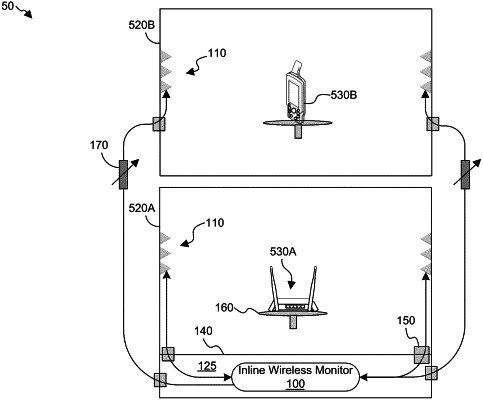| CPC H04W 8/005 (2013.01) [H04W 24/08 (2013.01)] | 24 Claims |

|
1. A test instrument for a wireless device-under-test (DUT), comprising:
a processor;
a radio in electrical communication with the processor;
non-volatile memory in electrical communication with the processor, the non-volatile memory storing computer-readable instructions that, when executed by the processor, cause the processor to:
configure the test instrument to function simultaneously as an active client that uses the radio to transmit and receive wireless traffic to and from the DUT and as an inline wireless link monitor that monitors wireless traffic by capturing wireless packets sent between the active client and the DUT;
establish a wireless communication link between the active client and the DUT; and
wherein the inline wireless link monitor captures and streams the wireless packets in packet capture (PCAP) or other packet format that captures packet headers and payload and applies timestamps, and
wherein each test instrument has an internal clock, and the internal clocks are time-synchronized according to a time synchronization protocol;
merge the streams of the wireless packets using the timestamps applied by the synchronized internal clocks;
generate a plot of a wireless communication link characteristic for the DUT using the synchronized merged streams of wireless packets.
|
|
9. The test instrument of claim 1, further comprising a common housing, wherein the processor, the radio, and the non-volatile memory are disposed in the common housing.
|
|
16. The system of claim 10, wherein the time synchronization protocol comprises a clock synchronization protocol.
|